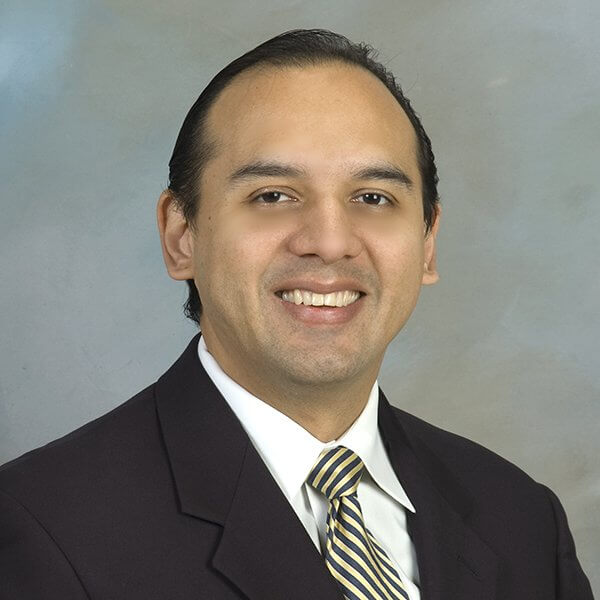Texas Medical Center Grant Supports Telemedicine For Children with Complex Medical Conditions
HOUSTON, January 28, 2018 – The Texas Medical Center Health Policy Institute is providing $106,753 to support a new telemedicine program that doctors hope will improve their ability to treat children with complex medical conditions while also saving money.
The project, led by UT Physicians High Risk Children’s Clinic (HRCC), seeks to solve a major logistical challenge: Often, kids with the most complicated medical conditions have the hardest time getting to the doctor.
“Transporting these patients is very difficult,” said Ricardo A. Mosquera, MD, medical director of the clinic. “The families have to bring equipment. Sometimes they have to take an ambulance to the clinic. It’s a population well-suited to telemedicine.”
Mosquera’s clinic treats about 400 children with medical complexity, defined as those with chronic, intensive care needs requiring a high level of support. They include children with diseases that affect multiple systems of the body including severe neurologic and pulmonary conditions and those who depend on technology to survive. Patients at the clinic have conditions including cerebral palsy, cystic fibrosis and Down syndrome, among others.
Unlike typical clinics – where doctors may have thousands of patients each – the doctors and pediatric nurse practitioners at the HRCC have only 75-100 patients each. The clinic staffs both primary care providers and specialists. Patients can get same-day appointments, and the nurse practitioners and doctors take calls after hours. Patients are generally referred to the clinic after spending significant time in the ICU.
The clinic is critically important to patients, but it’s not always easy for them to visit. Parents face difficulties missing work, traveling to the Texas Medical Center and arranging childcare for their other children. Because some patients rely on ventilators and other technology to survive, it can take hours to prepare for a visit. Time spent inside a clinic or hospital increases the risk that patients can acquire life-threatening infections.
Under the telemedicine initiative, the clinic will attempt to triage and/or diagnose patients via video calls, eliminating the need for complicated and potentially dangerous transportation. “The families who’ve tried it already love it,” Mosquera said. “They keep sending us videos.” Telemedicine would only be used if the health care provider already has an existing relationship with the patient, said Mosquera, who is an associate professor of pediatrics at McGovern Medical School at UTHealth and an attending physician at Children’s Memorial Hermann Hospital.
His team will study whether the telemedicine initiative can decrease the number of visits to the clinic without increasing the number of hospital admissions and emergency room visits. Children with medical complexity represent about 0.4 percent of kids in the U.S. but account for 40 percent of pediatric health care costs, so reducing their time in the hospital could save vast sums. Mosquera’s research already shows that the clinic itself helps save money and reduce hospitalizations.
“We’re always interested in creative ways of reducing the cost of medical care without sacrificing quality,” said Stephen Linder, PhD, associate director of the Texas Medical Center Health Policy Institute and the director of the Institute for Health Policy at the School of Public Health at UTHealth. “We’re eager to learn about new ways of treating some of our region’s most vulnerable patients.”
As part of the new initiative, a home health nurse will also visit four to six clinic patients weekly at their homes. The combination of telemedicine and home visits is designed to help combat the “submarine effect,” Mosquera said. Health care providers often only see patients intermittently and may be unaware of obstacles that prevent proper treatment. For example, insurance might not cover the cost of a piece of medical equipment, or a pharmacy might not stock a needed medication. “After the initial encounter at the clinic, it’s like they go underwater, and we don’t know what’s happening until they emerge in the midst of a medical crisis,” Mosquera said. Home visits could help solve that problem.
UTHealth, Baylor College of Medicine, Memorial Hermann Health System, Children’s Memorial Hermann Hospital and the Cizik School of Nursing at UTHealth are also participating in the study. Researchers will share their findings in approximately one year. The grant is part of the Texas Medical Center Grant Program in Collaborative Health Policy Research, which has awarded approximately $2 million in grants to researchers studying innovative approaches to health policy.
About the Texas Medical Center
What was sparked with the founding of a single hospital in Houston in 1925 has come to be the Texas Medical Center (TMC) today. Home to 59 member institutions, TMC operates the world’s largest medical city with 10 million patients and family encounters with doctors, nurses and staff at TMC every year. TMC is dedicated to reinventing life sciences to improve the health and wellness of Houston, and the world. Learn more at www.tmc.edu.
About the Texas Medical Center Health Policy Institute
The Texas Medical Center Health Policy Institute was established to inform, define and lead health policy with the goal of developing the most effective solutions to improve the health of diverse populations around the globe. By driving innovative, evidence-based health policy initiatives across the Texas Medical Center’s 59 member institutions, the Texas Medical Center Health Policy Institute addresses fundamental health policy issues important to Houston, Texas and the nation. More information at www.tmc.edu/health-policy.
For media inquiries:
Texas Medical Center Health Policy Institute
Ryan Holeywell, Communications Manager
rholeywell@tmc.edu
202.277.0802 (cell)
UTHealth
Rob Cahill, UTHealth Media Relations
robert.cahill@uth.www.tmc.edu
713.500.3030

